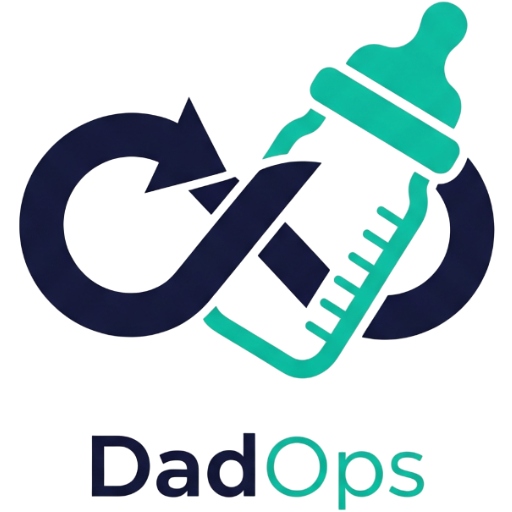Starting on “The Great Data Migration” of mealtime with your baby? Here’s how to know they’re ready for solids: they might sit up with a touch of support and lose the tongue-thrust reflex. Begin a colorful menu with purées—think sweet potatoes and bananas! Introduce foods gradually, watching for giggles or grimaces as feedback. Guarantee mealtime comfort, and keep a sprinkle of humor in your parenting toolkit. Curious for more tidbits? You’re in the right spot!
Key Points
- Ensure the baby shows readiness by sitting up with minimal support and displaying food interest.
- Introduce a diverse range of single-ingredient purées, monitoring for allergic reactions.
- Gradually progress from smooth to chunkier textures, allowing time between new foods.
- Regularly observe and respond to the baby’s feedback during feeding sessions.
- Maintain communication with caregivers to align on feeding strategies and adjust as needed.
Assessing Readiness for Data Migration

Before you dive headfirst into the great “data migration” project of introducing solid foods to your little one, it’s crucial to assess readiness, just like you’d check system compatibility before a big software update. Is your baby sitting up with minimal support? Have they developed the curiosity to grab at your lunch like a mini food critic? If so, congrats—starting solids might be on the horizon!
Remember, baby led weaning is like handing over the user manual to your little data processor. Look for these signals to ensure they’re ready to upgrade from milk:
- Tongue-thrust reflex fades
- Interest in food skyrockets
- Coordination improves
Additionally, if you notice any concerns, don’t hesitate to escalate to Tier 3 Support by seeking advice from a healthcare provider. Also, remember the importance of recognizing and responding to your baby’s hunger cues during this transition to solids. As you embark on this new journey, consider cherishing these moments as an opportunity to bond with your baby, much like the experience of feeling their first movements.
Building a Diverse Data Source Portfolio
As you commence on the exciting journey of “data migration” from milk to solids, think of yourself as a culinary data analyst, curating a diverse data source portfolio for your little one. Your mission: introduce a smorgasbord of flavors and textures as your baby’s first food. Be mindful of allergic reactions as you introduce new foods, ensuring each addition is gentle on your baby’s sensitive system.
Consider these culinary data points:
Veggies, fruits, grains; each bite a new data entry in your baby’s evolving taste database.
- Veggies: Sweet potatoes, carrots, peas.
- Fruits: Apples, bananas, pears.
- Grains: Rice cereal, oatmeal.
Each new food is like adding a unique data entry, expanding your baby’s taste database. Keep it colorful and varied, like a foodie’s dream spreadsheet. To further enhance this journey, consider implementing efficient diaper storage solutions to ensure that diaper changes remain convenient and stress-free, allowing you to focus more on introducing new foods. Additionally, maintaining a clutter-free environment can help ensure a safe and nurturing space for your baby’s exploration.
Implementing a Gradual Migration Strategy

To kick off your baby’s culinary data migration, think of yourself as a project manager rolling out a new software update—except this update involves sweet potatoes and bananas, not lines of code.
Your mission? Implement a gradual migration strategy. Here’s how:
- Start with single-ingredient purées. It’s like testing a new feature in a sandbox environment.
- Allow a few days between new foods. Monitor for compatibility issues (aka allergies).
- Introduce a variety of textures over time. Think mashed, then chunkier—like moving from beta to full release.
When choosing the right feeding tools, consider comfort, safety, and style to ensure both you and your baby have a pleasant experience. Remember that understanding newborn cues is crucial, as it helps you know when they’re ready to explore new foods.
This method keeps your little one’s taste buds engaged while ensuring a smooth progression. Additionally, ensure that your baby is calm and not overly hungry when introducing new foods, similar to the approach taken when transitioning to bottle-feeding.
Monitoring System for Data Compatibility
You’ve got your gradual migration strategy rolling like a well-oiled machine, so let’s talk about setting up a monitoring system for data compatibility. Envision this: your baby’s tummy is like a database, processing all kinds of new food data. You need to guarantee smooth operations, right? By employing bonding protocols, you can ensure seamless communication between all the new types of food data introduced to your baby’s system, much like how these protocols enhance connectivity in networked systems.
Here’s a quick cheat sheet:
| Data Type | Status Check | Action Plan |
|---|---|---|
| Veggies | Smiles or grimaces? | Keep or pause feed |
| Fruits | Diaper drama? | Adjust frequency |
| Grains | Hiccups? | Monitor hydration |
It’s important to regularly revisit and update your data monitoring system as your baby grows and explores new types of foods, much like updating safety measures in a babyproofed home. This Milestone is crucial as it acts as a validation of your approach, providing confidence and motivation to continue introducing new foods.
Analyzing Feedback and Adjusting Inputs

Get ready to channel your inner data analyst, because it’s time to fine-tune your baby’s food adventure. The progression from milk to solids is like upgrading your baby’s operating system; feedback is key. Watch for these signals:
Fine-tune your baby’s food journey, like upgrading their operating system, by paying attention to key signals.
- Happy giggles: Your baby’s a fan.
- Wrinkled nose: Maybe that carrot purée needs work.
- Evasive maneuvers: Spoon dodging suggests a hard pass.
Don’t worry, DadOps isn’t all trial and error. Adjust your inputs—perhaps a bit more banana, less broccoli. Remember, you’re not just testing flavors, you’re optimizing the experience. Keep it light, stay curious, and embrace the messy data journey. Just like hardware hardening, fine-tuning your baby’s diet requires careful monitoring and adjustments to ensure a successful outcome. Similar to a first bath deployment, ensuring everything is in place before starting can make all the difference in the experience. Consider setting up communication plans with your partner to ensure you are both on the same page about introducing new foods and tracking your baby’s preferences.
Frequently Asked Questions
How Can I Prevent Data Corruption During Migration?
You can prevent data corruption by closely monitoring each new input, ensuring compatibility, and introducing changes gradually. Consistently check for any adverse reactions and make adjustments as needed to maintain a healthy and smooth progression process.
What Are Common Errors in the Data Migration Process?
You might encounter errors like inconsistent data formats, overlooked dependencies, or incomplete data transfers. Double-check your mappings, make certain all dependencies are accounted for, and verify data integrity to minimize these common migration issues.
How Long Should the Data Migration Process Take?
You should expect this data migration process to take a few months. Gradually introduce new data sources, monitoring closely for errors. Don’t rush; guarantee each new input is well-integrated and accepted by the system.
Are There Data Migration Tools for Troubleshooting Errors?
When troubleshooting errors during your data migration, you’ll find tools like patience, observation, and adaptability invaluable. Embrace these ‘resources’ to identify issues and adjust strategies, ensuring a smoother shift for your little one’s dietary expansion.
How Do I Handle Data Rollback if Migration Fails?
If the data migration fails, don’t panic. Rollback by reverting to the reliable single source: milk. Retry introducing solids gradually, observing responses. Keep a log to track what works, ensuring a smooth changeover for your little one’s diet.




